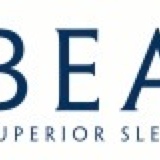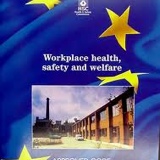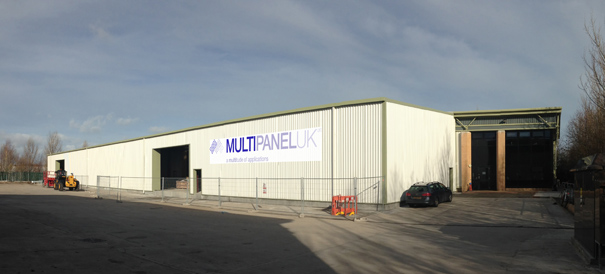Information
-
Document No.
-
Audit Title
-
Client / Site
-
Conducted on
-
Prepared by
-
Location
-
Personnel
Introduction
-
Tour starts at employee entrance, each category will take the new employee on a loop of the shop floor. The safety information must be explained at the relevant places on the route. All boxes need to ticked yes.
-
Name of new employee.
-
Photo of new employee .
1. Carpark
-
Explain barrier entry and exit.<br>
-
Explain where employees can park their vehicles.
-
Explain charge for parking in disabled bay.
-
Explain the that the bus shelter is the only location for smoking on site.
-
Show the location of the fire assembly points.
2. Employees entrance foyer
-
Explain how to enter and exit. Explain the clocking card proximity and barcode.
-
Show employee what to do if they encounter a fire. (Break glass)
-
Explain who are the members of the fire team and what to do when the alarm rings.
-
Show employee the different types of fire extinguisher for different types of fire.
-
Explain the purpose of the monthly forum meeting and tell them who their representative is .
-
Show employee the H&S at work poster .
-
Explain the Monday morning 11 am test and the type of noise it makes ( bell ringing ) .
-
Show the employee the holiday calendar,mission statement and works post.
-
Show the employee the Envases first aiders photograph sheet and first aid facilities.
-
Inform employee of company phone number 01639 814411.
3. Washroom
-
Show employee wash, wc and shower facilities.
-
Explain that a locker will be allocated .
4. Entry to main production area from employee entrance.
-
The following points must be confirmed before entry onto production area !
-
Explain the purpose of the yellow safe route line.
-
Employee must understand the minimum requirements of PPE to be worn before entry to shop floor. Explain the four types of ear protection and the safety shoe options.
-
Employee has ear plugs?
-
Employee has been issued safety shoes?
-
Employee has been issued with their uniform?
-
Explain the meaning of the warning signs on the entrance door to the shop floor - no mobile phones, no smoking and fork lift truck presence.
-
Explain to employee that no jewellery is permitted on shop floor .
-
Explain that the safe route line is shared with the FLT route.
5. Health and Safety communications board.
-
Explain the monthly committee meeting .
-
Explain the different topics on the board.
-
Show employee H&S policy statement of intent and structure.
-
Ensure employee understands the different ppe available and when it is required.
-
Show employee location of ppe .
6. Walk from communication board to line 7 extrusion area.
-
Show employee the location of the light switches.
-
Demonstrate the functions of the clocking terminal.
-
Inform employee of electronic locks which prohibit entry into upstairs offices at front of factory. Explain that this area is prohibited after 5 pm on weekdays and all weekends.
-
Point out that all guards (use line 7 inside lining oven as example) are interlocked or fixed . Guards must always be present and operational .
-
Explain that entering equipment by bypassing guards is not acceptable, inform employee of the availability of the safe stop procedure.
-
Inform employee of correct route to finance department ( upstairs at reception entrance).
-
Point out fire extinguishers on wall.
-
Explain to employee on the correct waste bin for chemical rags and general waste.
-
Explain to the employee that the electric distribution boards can only be accessed and rest by qualified personnel .
-
Explain the purpose of the quality lab, litho lab and prepress room.
-
Stop at line 7 press conveyor and explain that although cans look cold they are actually hot and can burn fingers without ppe. Explain the fact that the new employees is at extra risk because of their lack of knowledge of the plant and processes.
-
Explain the dangers of FLT ' s at the corners of the plant. Inform the employee that extra care is required and to use the mirrors available.
-
Inform employee of purpose of electrical switchgear at line 7 extrusion corner. Explain only authorised persons can adjust the switches.
-
Show the employee where the mains water is isolated.
-
Show the employee the isolation valve for the mains gas supply. Explain to the employee that in the event of a fire , if passing the isolation valve can be turn.
-
Show the employee the compressed air isolation panel. Explain the dangers of switching the supply on without checking.
-
Show the employee the hazards behind line 7 wash. Explain the difference between the the wash baths with relation to chemicals and temperature.
7. Demineralisation plant
-
Explain the purpose of the demineralisation plant, making reference to acid and caustic inputs. Ensure the employee understands that spilt clear fluid isn't necessary water.
8. Compressor house
-
Explain that access to the compressor house is prohibited. To satisfy curiosity show the new employee the equipment within the room.
9. West side yard
-
Explain the dangers of possible exposure to the sodium hydroxide and hydrochloride acid within the holding tanks.
-
Show employee location of emergency shower and how to use it.
-
Show employee the fire emergency exit.
10. Neutralisation room
-
Explain neutralisation process, pointing out the chemical hazard.
-
Explain to employee what the spill kit is for. Inform employee of chemical spill team.
-
Show employee location of emergency shower and how to use it.
11. Chemical storage room.
-
Inform employee that roller shutter door should be closed to protect area if a fire occurred.
-
Show employee the chemical spill kit.
-
Explain to the employee that naked flames or ignition sources should be avoided in this area.
12. Fork lift truck charging area.
-
Explain to employee that there could be oil or water spill in this area.
-
Explain to employee that they not permitted to drive a FLT without management permission.
-
Explain the dangers of FLT ' s at the corners of the plant. Inform the employee that extra care is required and to use the mirrors available.
13. Stores areas
-
Show employee location of stores area and procedure for booking out parts.
14. Goods in warehouse.
-
Explain the rules of the zebra crossing.
-
Inform employee to be extra vigilant with FLT safety.
-
Explain the requirement of wearing hi vis clothing in the warehouse areas.
-
Show employee location of ppe cupboard ( soon to be moved) .
15. Rear yard
-
Explain the haulage vehicle and FLT hazard.
-
Explain the use of the automatic gate.
-
Explain that fire exit routes run alongside the outside of the building.
-
Explain that all outside stored chemicals are bundled.
-
Show employee waste oil tank
-
Explain to employee purpose of RTO, boiler house and scrap compactor.
-
Explain to employee the different types of waste skip available.
16. Goods out warehouse.
-
Explain the rules of the zebra crossing.
-
Inform employee to be extra vigilant with FLT safety.
-
Inform employee of extra hazard of main aisle of FLT presence with high stacks of product.
17. Canteen (production area)
-
Explain to employee the locations of the safe drinking water points.
-
Explain to employee that there is no eating or drinking on production areas. Drinking bottles of water is acceptable.
18. Engineering office
-
Show employee the location of the engineers and managers office.
19. End of line ( necking)
-
Explain that the eol aisle is shared with flt's. Eye contact with driver must be made and acknowledgement given before passing a truck.
20. East side yard
-
Show employee fire exits and side fire exit to front car park.
21. Reception entrance
-
Show employee new PPE board.
-
Explain that entrance to the reception area is prohibited after 5pm and weekends.
Signature
-
Any questions ?
-
I have had site rules and safety explained to me . I understand that I have a responsibility to work safely and that my acts or omissions ( such as not reporting hazards) could have an effect on my fellow employees safety.
-
Date and time











